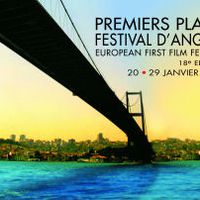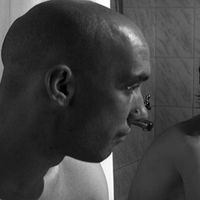The Eastern European Cinema Conundrum
The European cinema map has one big blank space with a red dot marked out in the middle. The blankness extends throughout the East of the continent, and the red signals Romania, the country that has become, in the past two years, the most exposed European national cinema in terms of attention from criticism, festival programming and the number of the awards coming from juries as well as citations from audiences around the globe.
The films of Cristi Piui (The Death of Mr. Lazarescu), Corneliu Porumboiu (12:08 East of Bucharest), Cristian Mungiu (Four Months, Three Weeks, Two Days), to cite but three examples, speak for themselves: cinema did happen in Romania. It grew out of the problems, tragedies and absurdities of everyday life under the political and social realities of the former communist state, and that is where much of its charge, its necessity, its raw language and aesthetics derive from. However its international praise, patting and recognition was taking place at the same moment Romania was being established as one of the new members of European Union, and as a representative of the “New Europe” which had recently embraced the first group of countries from the former “Eastern Block” (among them Czech Republic, Slovakia, Poland, Hungary) and ex Yugoslavia (Slovenia).
Eastern European cinema is an elusive categorization, and sometimes it seems that even those that use it do not have a clear idea who and what it represents. The term is most often used as an umbrella for the national cinemas of the Czech Republic; Poland; Hungary; Slovakia; Bulgaria and Romania, many times extended to Slovenia; Croatia; Serbia; Bosnia and the rest of the countries that made up the former Yugoslavia. The western gaze recognizes one strong common denominator in this rather vast territory of the European “East” which obviously does not have as much to do with geography as it does with politics: namely, the social and economic change each of these countries endured in their transitions from their old communist regimes to the “New” democratic Europe and its free market.
What the term Eastern European cinema disguises is the diversity that exists among the countries whose recent histories have been shaped by the 1989 revolutions, the fall of Berlin wall and the end of Cold War. While the “Eastern Block” was violently struggling to adapt to global capitalism and dispatch the consequences of its brutal fascist and communist past, the territory of the former Yugoslavia slid from communism to various nationalisms and civil wars erupted. But one thing was for sure: the world, as the cult “Eastern European” filmmakers knew and depicted it in their various, gritty aesthetics (remember New Czech Cinema, Black Wave of Yugoslavia, Polish New Wave of late 60’s?), was changed. Meanwhile, a shift in visual language and technology took place in the 90’s. Thus, a deep gap was formed between the old cinema aesthetics and the new political realities, a gap only few of the Eastern countries have managed to bridge.
Poland, the Czech Republic and (to an extent) Hungary have evolved into what some may call fully functioning and quite diverse national film industries (not only in the field of production, but also in distribution and exhibition). Elsewhere small groups of promising arthouse filmmakers have broken through, reaping success at festivals but exciting only modest interest and effecting only marginal change in the context of their home film scenes.
When the West selects and plays films coming from the East, it tends to focus on hyper-realistic political thrillers and war stories, gangsters and prostitutes, drug use and suspicious nightclubs, extreme poverty, social pressure and pathologies, leaving the audience with a highly stereotypical representation of “Third European” countries and their residents. Filmmakers that desire to share images of everyday life and people dealing with everyday needs and problems have done so, yet face a severe challenge when it comes to showing their films in the international festival circuit because they are often deemed to not be “Eastern” enough. To inflame this argument a bit further: it could be said Eastern European filmmakers have lost their right to tell stories of ordinary man.
It isn’t difficult to speculate, for example, that the incredible international reputation of the Romanian film Four Months, Three Weeks, Two Days was elevated more on account of its subject matter than on its cinematic qualities. And before the Romanians there were Bosnian filmmakers (Danis Tanovic, Pjer Zalica, Jasmila Zbanic, Srdjan Vuletic et al), the first group of Eastern European directors in the new millennium to have their work in the international spotlight (beginning in 2002, the year No Man’ Land won an Oscar for best foreign film). Warmly received as long as their films were revealing their country’s violent past, interest dispersed when the subject had changed, despite the expression being as strong as ever. Their international influence, however, is not comparable to the impact they’ve had in their homeland, where cinema has played a crucial role in the rehabilitation of the post war reality. Bosnian filmmakers made the critical step of being the first to focus their attention on the present and the future – as opposed to filmmakers of their neighboring countries, such as Serbia and Croatia, who still rake past conflicts for their cinematic worth.
So little serious research has been done on the film histories and contemporary activities of Eastern European countries, not only in programming, but also in criticism and publishing. So few books and articles that deal with this region are available in the English language, even less so outside of specialized academic circles; and the majority of existing materials is written by foreign scholars, who as outsiders often lack the delicate political context, first hand overview and knowledge of the country, as well as the experience of being an actual part of the cinema space they are writing about. The same few films and filmmakers tend to be exposed, same topics analyzed in the same way, while the majority of the Eastern European cinema tradition continues to stay out of the film canon, out of awareness, and out of discourse.
In the year 2009 twenty years will have passed since the European West met East, and this marker offers an appropriate moment to open a real, two-way dialogue between the two entities. This article is an invitation to programmers, critics and film workers to do so, and also an announcement of a series of first-hand reports coming from the Eastern European region to be published in S.E.A. Images in the year to come.
By Nika Bohinc
Similar content
By Kerrine Goh
07 Oct 2006
posted on
08 Nov 2011
By Alicia Kish
21 Jan 2011
By Kerrine Goh
25 Jun 2007
By Kerrine Goh
27 Jan 2006




